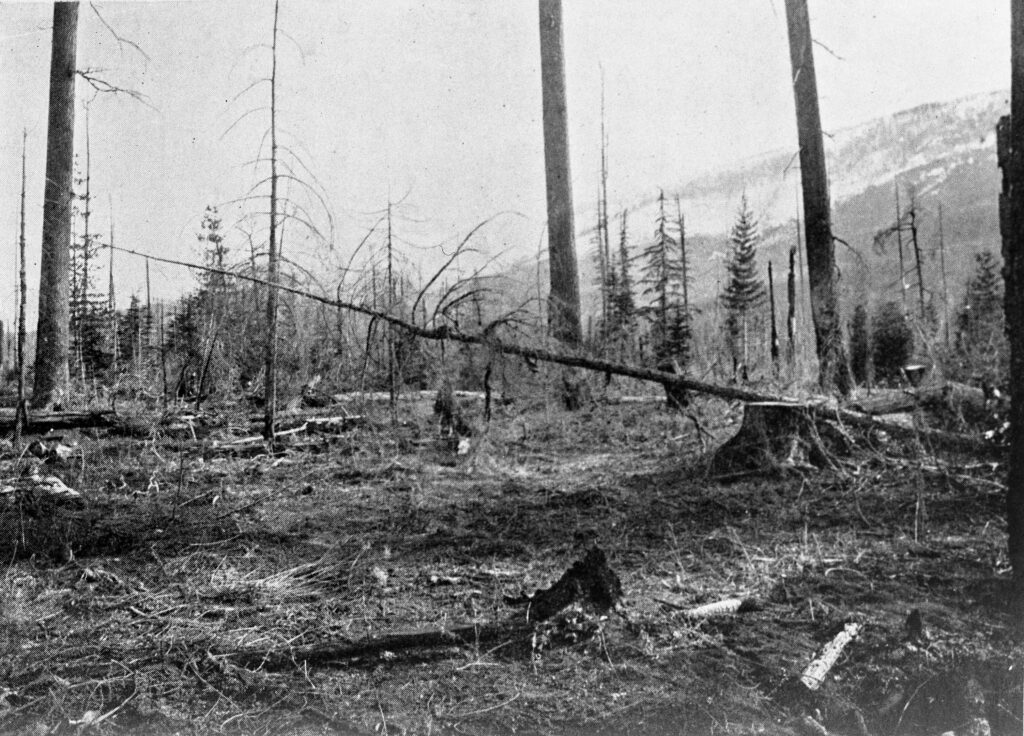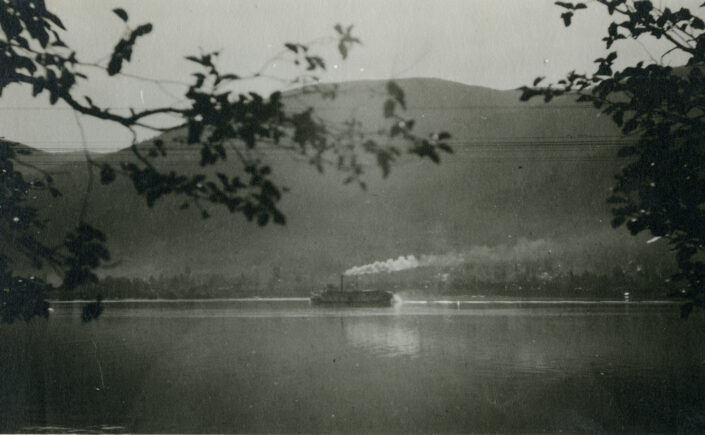All the propaganda worked. Soon hundreds of optimistic European colonists were settling on the shores of Kootenay Lake. Most were “well educated and came largely from England. They represented most of the professions together with trade and industry, and also a fair sprinkling of retired army and navy men.” 9
Some settlers bought land sight unseen through British agencies, only to discover upon arrival that the so-called ideal orchard land they had purchased for a hefty sum was a bouldered, forested slope. In numerous cases, “what was advertised as ‘lakeshore’ was at least two hundred feet above the shoreline.” 10
After sailing from Europe to Montreal, and a long train ride across Canada, settlers were delivered to their new homes by sternwheelers, where all their worldly possessions were piled on sandy beaches and wharves. There in front of them lay an insurmountable challenge: establishing a new life through fruit ranching.
Gerda Kemball, one of many children accompanying the surge of optimistic orchardists, recalls what it was like to arrive on the shores of Kootenay Lake:
“My older sister Dorothy and I stood clutching the deck railing as the Kootenay Lake sternwheeler KOKANEE swung off her course for Lardeau and headed straight for a strip of sandy beach. There in the lengthening afternoon sunlight lay our future home – two shacks huddling on the lake shore backed by a heavy growth of timber sweeping up the benchland. I was not yet twelve years old, but as we drew in towards the shore there surged through me a foreboding of the arduous toil ahead involved in taming this wild rugged country into a semblance of a fruit ranch.” 11

Ground for a fruit ranch, partly cleared, Kootenay District
Upon arrival, some had the luxury of a hut to protect them from the brutality of the elements until they built a home. Others were not so lucky. But almost all faced the back-breaking task of clearing the hillside before any planting could commence. Forests had to be felled or burned, and dynamite was used to shatter the residual stumps and boulders. The risks of using dynamite were costly. Cut the fuse too short, and the results were fatal. Those who could afford to hire carpenters and extra hands to assist in clearing the land often hired Chinese labourers, for they provided the cheapest labour, anywhere from $20.00 to $25.00 per month. 12
After the land was cleared, the young fruit trees were planted, often accompanied by rows of strawberries, raspberries and other small fruits intended to provide “some necessary income until the trees bore fruit in five or more years.” 13 As more and more settlers arrived, the benches and shores of Kootenay Lake slowly transformed “from heavily wooded forest to rows of apple, peach, pear, plum, and cherry trees.” 14
9. Dawson, Hope and Forty Acres, 25
10. Lang, Kootenay Outlet Reflections, 17
11. Affleck, Kootenay Lake Chronicles, 151
12. Fruit and Farm Lands Company Limited, The Wonderful Kootenay Fruit Lands
13. Thompson, Kootenay Outlet Reflections, 173
14. Land, Lost Orchards, 40
